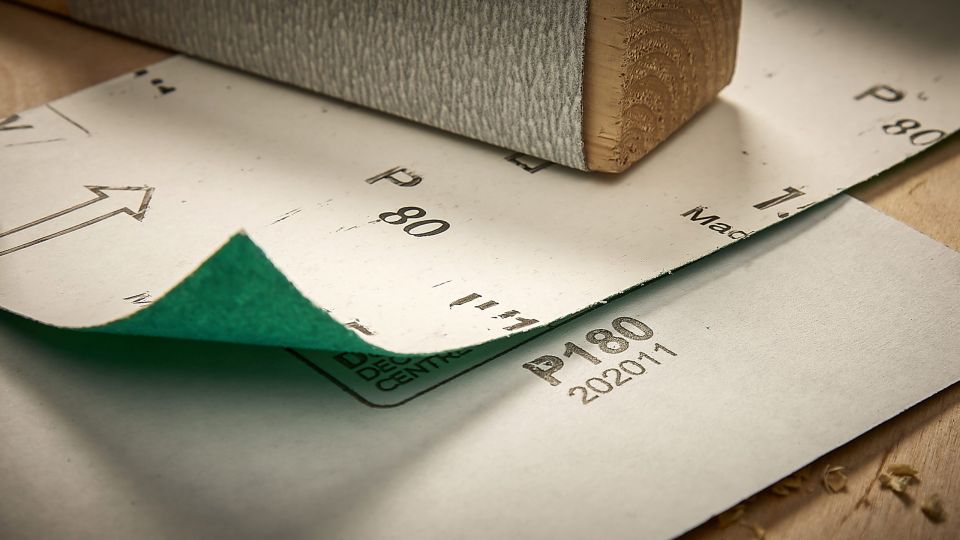YOUR CART
- No products in the cart.
Subtotal:
£0.00
BEST SELLING PRODUCTS
Free delivery on all orders to Mainland UK

If you’ve been looking into buying a cordless sander recently, you may have seen Ryobi’s handy One+ palm and random orbital cordless sanders.
Reasonably priced compared to their competitors, you could save even more money by pairing these tools with a Badaptor and using your existing 18V battery to power them.
All that’s left to do is to select your sandpaper. But why is sandpaper numbered?
Sanders are mostly used to prepare wood and metal for finishing, so it’s important to know what the numbers on the sandpaper mean before sanding anything. You want to make sure the sandpaper you’re using is right for your application.
The number on the back of all sandpaper is known as the grit number.
Grit is the abrasive material coating the paper, which can go from very coarse, to very fine. In a very basic sense, the number on the sandpaper refers to how abrasive the sandpaper is. The lower the number, the coarser the sandpaper is. The higher the number, the finer it is.
Here’s where things get a little complicated. There is more than 1 system for measuring the grit on sandpaper.
If you live in Europe, sandpaper will follow the FEPA (Federation of European Producers of Abrasives) numbering system. This is usually indicated with the letter “P” in front of the number.
If you live in the US, sandpaper will follow the CAMI (Coated Abrasive Manufacturers Institute) numbering system. These numbers don’t have any indicators preceding them.
The two numbering systems are similar when it comes to the coarser grits, with P24 all the way through to P220 being almost the same number in the CAMI system. These are commonly known as Macro grits. However, the two start to diverge quite drastically after this point. P400 is 320 in the CAMI system and P1200 is 600 in the CAMI system. These are known as Micro grits. Therefore, it’s important to know which numbering system applies to your sandpaper before you buy it.
If you’d like to know more about which sandpaper to use, the Hand Tool Essentials blog post breaks down each grade in more detail and advises how they should be used.
Remember that can use your current 18V battery to power 18V Ryobi One+ tools (Including Ryobi’s sanders) when you use a Badaptor. A Badaptor will convert 18V batteries from DeWalt, Makita, Milwaukee, Bosch Professional, Ridgid or AEG to work with the entire range of Ryobi One+ 18V tools.
Get yours now at Badaptor.com
Sign up for our newsletter to receive product news.
Leave a Reply